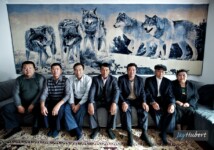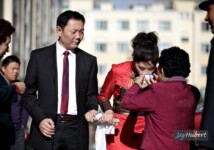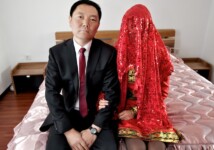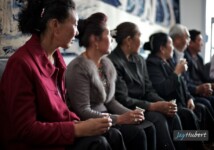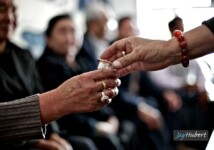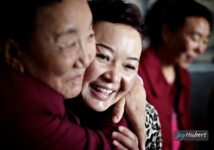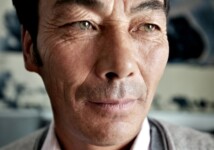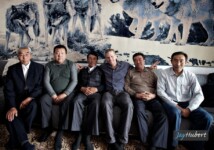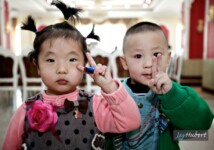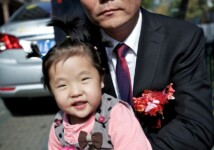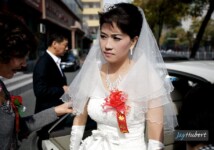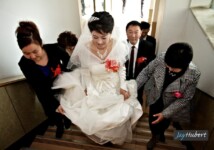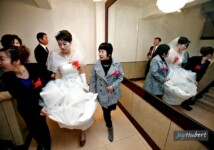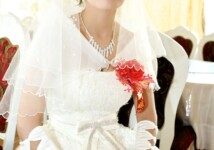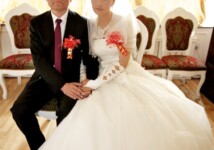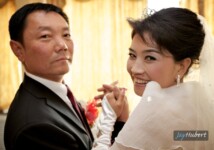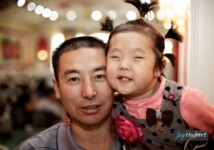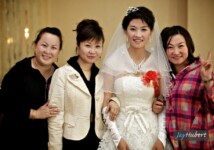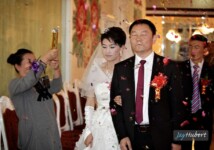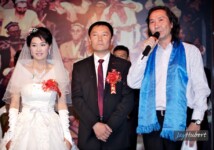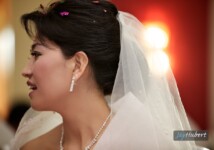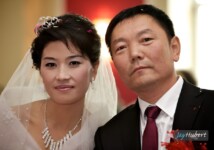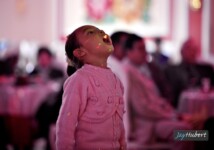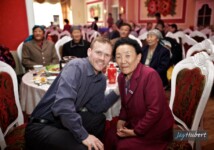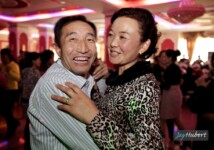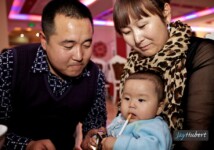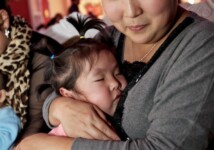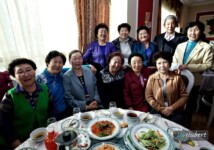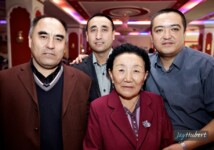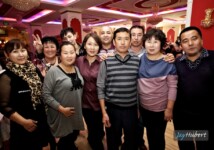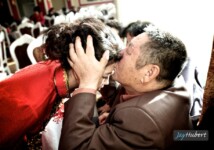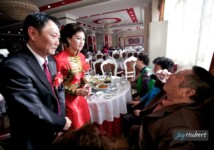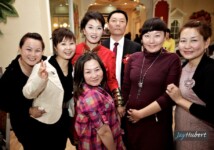
This was definitely the year to have a wedding. Everyone and their dog got married this year. Which is pretty amazing considering most countries haven’t even legalized dog marriage yet. With my own wedding less than two months away, I had to stand in for my fiancée at her older brother’s wedding in Xinjiang, China. And of course in addition to being the surrogate sibling, I also took on wedding photographer duties. And as usual I was the token foreigner at the ceremony. It’s a tough job, but some poor honky had to do it.
First of all, for those of you out there wondering how you have a Mongolian wedding in China, I should probably inform you that there are more Mongolians in China than in Mongolia. Then again, there are probably more foreigners in China than there are people in Mongolia. With a population of around 3 million, it’s one of the most sparsely populated countries in the world. But back to China. And the Mongolian wedding in China. So yes, my fiancée is ethnically Mongolian, which means her older brother is also ethnically Mongolian (funny how that works, yeah?), and so that calls for a Mongolian wedding. End of lesson.
Now what went down this time in Xinjiang wouldn’t really be called a traditional Mongolian wedding (though there was a pre-ceremony held at the bride and grooms newly purchased apartment that involved them holding a large animal bone together while drinking tea… I was too busy snapping pictures to ask someone to fill me in, but anything involving an animal bone MUST be traditional), not that I would know one if I saw one. The western clothes donned by the bride and groom were a bit of a giveaway perhaps. Just like with other ethnicities here in China (and round the world), Western influence has crept into even the most sacred of traditions. But overall the wedding still had a very minority, non-Chinese, non-Western vibe to it, though much of that was more of a Xinjiang influence than a Mongolian one. And for me that was really the beauty of it all. You had two Mongolians getting married in Xinjiang, where they are minorities amongst minorities, while wearing Western garb, eating halal food, dancing to Uighur songs, and getting drunk on Chinese spirits.
The coolest thing about Mongolians in Xinjiang is that they get along with everyone. Xinjiang has tons of minorities, and to be quite frank, most of them can’t stand each other. The Chinese and the Uighurs (the Turkic Muslim ethnic group that comprise about 45% of Xinjiang’s population, about the same percentage the Chinese now make up) are the two largest ethnic groups and neither group does a very good job of hiding their misgivings about the other. Then you have the Hui Muslims and the Kazakhs (also Muslims) making up another 10% or so of the population, but despite their Islam connection with the Uighurs, they rarely tend to get along either. Then you’ve got the Mongolians, who at only about 1% of Xinjiang’s population don’t exactly get much notice (in fact most Chinese, even those living in Xinjiang, are amazed to learn that Xinjiang has any Mongolians at all). But being such a small group and often working and living in close proximity to Muslim minorities, the Mongolians in Xinjiang tend to learn Uighur (and often Kazakh) languages quite well. This combined with the fact that they are also minorities (i.e. NOT Chinese) helps earn them bonus points with the Muslim minorities. On the other hand though, the Mongolians on average speak much better Chinese than Xinjiang’s other minorities, and they typically look more Chinese. And they aren’t Muslims. So the Chinese tend to like them a lot too. Well isn’t that groovy!
So what does this all mean for a Mongolian having a wedding in Xinjiang? Well, it means that you can invite EVERYONE to your wedding. Whereas a Chinese wedding in Xinjiang would typically have very few non-Chinese in attendance, and a Uighur wedding would similarly be attended by almost only Uighurs, this Mongolian wedding had at least four or five ethnic groups with attendance in the double digits, and probably a few scattered guests from other ethnic groups as well. And everyone is there drinking, laughing, and having a good time together. Uighurs and Kazakhs, Huis and Chinese, Tajiks and Mongolians, all eating the same food under one roof and dancing to the same wild Central Asian techno beats. It’s a beautiful site my friends. Especially if you’ve followed all the ethnic violence taking place in Xinjiang in recent years. Maybe it’s about time Xinjiang elected a Mongolian governor…?!
The wedding itself was fun, but pretty straightforward. Lots of talking, eating, toasting, dancing, and general merriment. The wedding and reception were both held in one big banquet hall, which made for very unexciting photography, especially with the unspectacular lighting there. The other problem with taking pictures at this wedding is that there was no time allotted to take pictures of the bride and groom. I snuck into their waiting room at the banquet hall two minutes before the ceremony began and snapped off a few posed shots, but that was the only time I could get alone with them the whole day. So I got far fewer pictures of the bride and groom than I would have at a Western wedding. I guess when you want people to hold onto their traditions, they chuck them aside with careless abandon, but when you want them to adopt new values and standards (like the idea of giving your wedding photographer at least half an hour alone with you to get some shnazzy shots on your big day), they won’t budge. We humans are a peculiar species, aren’t we?





